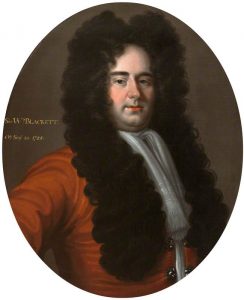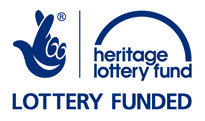
Reproduced by kind permission of the National Trust, Wallington Hall
The third son of the William Blackett who established the family’s fortunes in the northern lead and coal industries William was evidently marked out by his father as a similarly bright, ambitious, and entrepreneurial character. His somewhat hapless elder brother Michael’s letters show that from at least the age of 18 young William was reporting to his father on the state of his lead mines and mills. Eldest brother Edward might have inherited their father’s title as baronet in 1680, and bequeathed an estate that established the later Blackett of Matfen family, but to William was left the lion’s share of the lead and coal interests amassed from the 1660s, and the palatial mansion and grounds of Anderson Place on Pilgrim St in Newcastle.
Under William II the family’s mineral business expanded still further, notably through the acquisition of the Manor of Hexham in 1689 from Sir John Fenwick, shortly before the Blacketts’ lease of the manorial mineral rights (including Allendale and Fallowfield) was due to expire, and with the acquisition of similar rights in Weardale through the Moormastership from the Bishop of Durham in 1696. Coal interests at Kenton had been added in 1688, extending the Blackett coal interests to the north of the Tyne beyond those already secured in Stella and Winlaton to the south. With the manor of Hexham came Wallington Hall and estate. He also bought more land in the vicinity of Dukesfield, acquiring the estate of Steel in 1694, which included a smelter’s hamlet and -importantly- the far bank of the Devil’s Water, which would have enabled Blackett to build a millrace across the river and thereby greatly improve the power available to his mill. It was almost certainly under his ownership of the business that the additional lead smelting mills of Rookhope and Allenheads were constructed, upland mills dependant on peat for fuel, and allowing much closer location to the mines than hitherto.
Like his father before him Blackett was at the centre of commercial and civic life in Newcastle, as alderman, mayor, member of the Merchant Adventurers Company, governor of the Hostmans company, and MP for Newcastle from 1685, when he was also knighted. He contributed to the establishment of the Keelmen’s Hospital in Newcastle and built chapels for his miners at Allenheads and Coalcleugh. In his will of 1704 he appointed his cousin William Davison of Beamish and fellow Newcastle merchant John Wilkinson as trustees to oversee his estate. This reflected normal legal convention to protect the estate given that his son and heir William III was just 14 years old at the time, but he might also have seen enough in his son to be concerned that his was a far less businesslike character.
Greg Finch
See also:
E. Cruickshank, R.Harrison, ‘BLACKETT, Sir William, 1st Bt. (1657-1705), of Greyfriars House, Newcastle-upon-Tyne and Wallington Hall, Northumb.’ History of Parliament Online
R. Welford, Men of Mark ‘Twixt Tyne and Tweed, (1895), Vol 1
A.Purdue, The Ship That Came Home, (2004)
A.Kirtley, P. Longbottom & M. Blackett, A History of the Blacketts (2013)
G.Finch (ed), A Pack of Idle Sparks, Letters from Hexham on the church, the people, corruption and scandal, 1699-1740, (2013)
G.Finch, ‘The Carrshield lead mill dispute of 1694’, Archaeologia Aeliana, 5th ser, Vol 43 (2014)
G.Finch, The Blacketts, a Northern Dynasty’s Rise, Crisis and Redemption, (2021)

